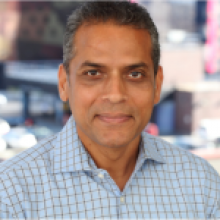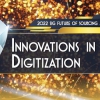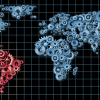Atul Vashistha is the CEO and chairman of global services and sourcing advisory firm NeoGroup, as well as the former (as of last month) chairman of the Nearshore Executive Alliance (NEA). Continuing our series of interviews from the recent SIG Global Summit in Orlando, Florida, we spoke to Atul about why he decided to found NeoGroup (and how the landscape has evolved since that decision); the ramifications of greater in-house capability; and the pros and cons of nearshoring - and why it's looking good for Mexico and Argentina...
Outsource: Atul, thank you very much for joining Outsource today at the SIG Summit. Can you start by introducing yourself and telling our readers a bit about NeoGroup?
Atul Vashistha: I am chairman of NeoGroup, a company I founded in 1999; I saw this opportunity in the globalisation of services – I felt that what had happened to manufacturing was going to happen to services. It definitely wasn’t the first one: companies like American Express, Texas Instruments, GE and Mitsubishi were already doing it. This was prior to Y2K and I felt like that might be the thing that took this trend over the edge.
I was working for Fortune 25 companies, and I ran international for Cardinal Health, and I couldn’t get my group’s technology projects done in time. We couldn’t find talent, whether it was in Atlanta, Columbus, Ohio…. I took a trip to India with my head of technology – I grew up in India but had been away for a very long time – and I was blown away by the development, and that led to me realising I could have my own business, helping companies figure out how to do this – how to take advantage of global talent?
So for the last 16 years our primary business has been advising Global 2000 companies on the whole sourcing lifecycle. We have methodologies around what to source, where to source it, and how to manage it. Three years ago we realised that as companies had scaled up dramatically, that there were a lot of processes that if they were destabilised – if they were unstable because of strikes or just change in economic conditions – that would have a huge impact on their ongoing operations. So we took all the data that we’ve been collecting on locations and supplies and created an application which has now turned into a cloud-based real-time monitoring of risk with your locations and your suppliers. This is part of the NeoGroup today, but it has its own brand called Supply Wisdom.
O: What do you think have been the key developments in the international sourcing business services industry from when you first saw that opportunity to where we are today?
AV: If I go back 16-plus years ago, it was project-orientated – so it was very discrete projects, it was very centric on the three ‘I’s: Israel, Ireland and India, and then India progressed dramatically because of scale. And it was truly remote, in the sense that there was very little interaction between the entities, between the client and the supplier. I think what’s changed there is that the projects are now of scale, and more importantly they are ongoing business processes. If that outsourcing failed in the past, it didn’t have a major impact on the company; today if engagement fails it can have a significant impact on the operations. I think that’s number one. A huge part of business operations are outsourced today.
I think the second piece is an equally large part that people don’t realise is their own centres. So if you look at GICs (or global in-house centres) that operation is significant, and in fact the complexity of work that’s being done in many of those is of very high quality, high risk or high complexity to the company. So the complexity of work is significant, it’s ongoing.
I think the other piece is there are a lot more locations where the work is being done and it’s no longer about the three ‘I’s. In fact, Israel has become this technology centre, Ireland is a lot more of a tax centre – in fact some of these locations don’t graduate enough engineers based on the need. And then now you have pockets of excellence I believe in every part of the world. You can go to Asia, and find great talent in Malaysia and the Philippines. You can go to Eastern Europe and find excellent talent in Hungary, Romania and other places; the same goes for Latin America, in locations like Guadalajara, Campinas, Bogota and Buenos Aires; so the number of locations has grown.
Another thing is that 15 years ago most outsourcing was done by the very large global companies. Today you’ll see from start-ups that literally are birthed from having a large part of their operations outsourced, to companies that are very domestic companies like Home Depot. Home Depot really is a company in the US and Mexico but outsources globally. I think that has been another big change.
And finally, the reason I started the company is that I realised there was very little knowledge about this on the client side. Clients really didn’t know anything about these locations, about the suppliers, about how to do business in this fashion – they may have known manufacturing but they didn’t know services – and I would say today that they are significantly better informed than they were. Maybe some remote locations they may not know but they have five or ten years of experience now doing this, which wasn’t the case before.
O: So what about the way that you work with those clients? How has that changed over time? Because presumably as the client side has got more mature and more capable internally, the sort of work they’ve required of you has become more complex.
AV: Yeah, absolutely. So when I look back ten-plus years ago, we were doing significantly more education. We were helping bring them along in a large sense. We were probably making all of the decisions, and clients could participate, but not as much because they could only tell us about their company but not about some of their choices. The engagement sizes we were doing were significantly larger. It would take us a long time to do something: what we’d do in the past that would take us 16/20 weeks, we’d get done in eight weeks today, so it’s at least 50% less time. From a consulting per engagement perspective, they are a lot smaller than they used to be.
Also the clients play a much bigger role today than they used to, so we end up doing much more targeted activity. So for example, 15 years ago we would have gone to a client, we would have help decide what project was right for them, we would help them decide on location with suppliers. Today we may do an engagement where the client is very clear on what it is that they want outsourced, so we don’t have to do any piece of work there. They also know where they want to be: they know they want to be nearshore versus India. They actually know a location pretty much.
I remember doing an RFP for a very large oil and gas company. We started with 41 suppliers, there’s not a single client today that would start with 41 suppliers. If they start with ten I’d be surprised. We focus much more now on managing risk for our clients than just the benefit. The benefit is a given; it wasn’t a given 15 years ago.
O: You’re also the outgoing chairman of the Nearshore Executive Alliance. Can you tell me a little more about that?
AV: The company has been global from the very beginning, and in 2010 I pivoted my personal attention from spending time in Asia-Pacific to spending time in Latin America, and the reason I did that was that clients were not outsourcing their most critical projects to Asia-Pacific – and also as the movement towards e-commerce was happening, with a high amount of customer engagement, they were not getting the right amount of talent in Asia-Pacific. My belief was that that work would either stay within the US or it would have to be an area that could understand the context, which meant they understood the US in terms of culture – and then the second thing was that they would have to work real-time.
And so there was no place other than nearshore, so I had to understand: could nearshore actually do it? I’d been working in LatAm since 2003, but it was a specific project: our client said, “We’re looking at Mexico City and we’re looking at Sao Paulo, could you help us compare them?” So we did these discrete projects, and I wanted to make sure that we, as a company, could claim that this was possible. Our approach has always been that before you help a client, you have to understand the market: what is the capability of the country, and then try to understand that capability in context. What is a trade organisation? What is a tax structure? Talent pool? Are they global suppliers? Are they regional? Are they local?
So we basically started that process in an in-depth way, and what I realised by 2012 was that there was significant capability. It was fragmented but there was significant capability and in fact huge investments were being made. In 2013 I got a call from Mike Barrett, CEO of Unosquare, and he basically said “I want you to come in: we’ve founded this organisation and we brought together buyers, advisers, suppliers, we’d like you to come in and see if this would be of interest to you.” I spent some time there at one of their meetings and it was pretty clear that this was a group of motivated individuals who were trying to build a pie instead of trying to figure out what to claim. I think if you look at my 15, 16 years of involvement with associations, I’ve always believed that we’ve got to build the industry to benefit from it. Which means we all have to make sure we’re spending time to make sure outsourcing stays successful. And so to me, the Nearshore Executive Alliance was definitely focused in the same way – so when they asked me to be chairman I took that on.
The focus for the last three years has really been to make sure we provide people a guide. So if someone says “Hey, I’m looking at building my front end for my e-commerce and I really need creative people who understand user experience, where do you think I could go that’s more cost effective than the US?” Well I know two locations you should be looking at and five suppliers you should be talking to. Imagine making that possible for all parts of outsourcing. The goal of it is not really to be an advisor but to be a guide – because I think in-depth exploration has to happen by clients. Do events where this ecosystem actually comes together so people know each other not just virtually but also physically.
Coming together with SIG is exciting, because all of these locations have been individual strategies. When people went to India they were literally “going to India”. I think what has happened with outsourcing is that a significant part of the client base is thinking about, “where can my business be done best?” They’re no longer thinking individually; they are thinking about the whole piece: from a risk perspective, from a quality perspective, from a control perspective where should I go? And I think coming together with SIG exposes LatAm to a wider customer base and I’m hoping that it adds to their global sourcing strategy, so they can no longer say, “I’m ignoring nearshore, it’s too risky, I don’t know anything about it” to now saying “I can look at it, and I can understand what parts of my strategy should it actually fit, and I have a place to go and a council to go to, in order to learn more about it.”
O: Looking at LatAm as part of the global picture that we inhabit, do you see any locations that are going to be particularly hot over the next few years that we haven’t really been looking at too hard up until now?
AV: I think that Mexico is going to be hot, in the sense that it’s a really easy place to outsource to for the US. The other good thing about Mexico is that it has multiple cities of scale. Scale is a big thing with outsourcing to any country – for example Costa Rica is a fantastic location for shared services, but Costa Rica doesn’t have scale; if I wanted to set up a thousand-person centre right now, it would take me two or three years. A call centre I could probably set up, but if I added complexity on top of that then I couldn’t do it. It’s the same challenge that Eastern European locations have. I can’t set up a thousand-person operation than quickly. So I think Mexico is going to be hot because the talent is fantastic. I think when you start looking at shared services, if I was looking for smaller shared services I think Costa Rica, it’s always been hot.
The one area that’s ignored by a lot of people is Argentina. Argentina has a lot of creative talent, so if you go to a CIO or a CTO today and say “tell me where you are reducing cost and tell me where you’re actually spending money,” what they’ll tell you is in any kind of legacy applications they have, or any kind of big software they have, they are reducing cost. The area they are investing in right now is digital. And guess what? Digital requires context, it requires significant interaction, iterative development, which is perfect for nearshore, and places like Argentina specifically.








